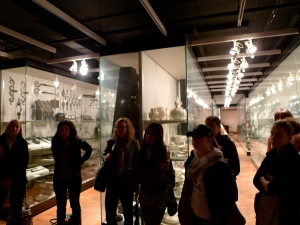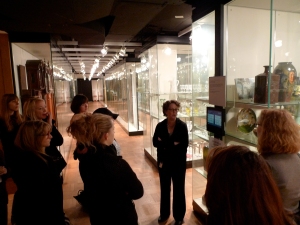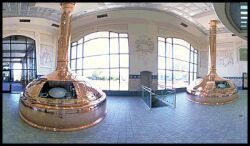Over the course of the Fall 2010 semester Museum Lab students worked in four teams of three to invent and develop fictional museums using Flickr. This experimental format supplanted the Lab’s more traditional design assignment as the majority of students were non-design grads from Media Studies, History of Decorative Arts and Fine Arts. The aim was to see if we could practice the internal functions of the museum – including collection, conservation, interpretation, education and exhibition – using Flickr’s editorial and content management features.
While Flickr did seem at times to be a bit of an antiquated program, and lacking in participatory features of more popular social networking sites it did provide an environment for discussing a wide range of very general museum issues in an an abstract and easy to manipulate surrogate to a real museum. Questions explored included: What is a mission statement? How does mission relate to a collecting policy? How do you create and manage metadata to sort and access information? What editorial decisions are involved in creating a thematic exhibition? How can we effectively use the tools of social networking including collaborative and participatory modes of interaction, user generated tags and comments? How does the from and functions of a networked media environment influence the reading of the content?
Salon de Refuse: A Trash Museum
A museum of re-purposed objects and materials for the creation of new works of art. The Salon de Refuse derives its name from late 19th Century Parisian Salon Refusés that was founded by artists who were refused by jury of the officially sanctioned Paris Salon.
Students: Michelle Jackson, Ryan Massey, Logan Sibrel.
Gotham City Street Art Museum
This Street Art Museum creates an online site for exploring graffitti, painted murals, paste-ups and other ephemeral urban artistic practices in public space.
Students: Tori Jones, Jayme Elterman, Kadie Yale
The Play and Learn Collection: Toys that Influence
This museum explores the effects of designed objects on early childhood development including gender roles, race, occupation and identity.
Students: Meagan Elevado, Racini Andres, Ruby Hoette.
New Yorker’s Tribute Museum
The Tribute Museum explores the space of memory archives the many often unoticed memorials and monuments in New York, including spontaneous acts of memorialization, tribute tattoos, and municipally sponsored memorial installations.
Students: Sinnead Lawler, Livia Di Mario, Jessica Peterson.
Critics invited to the final review included Shannon Mattern, Professor at the New School Department of Media Studies; Ilona Parkansky, Educational Media and Technology Planner at Ralph Appelbaum Associates and Susan Sellers, Founder and Principal of 2×4 Design.
Tim Ventimiglia









